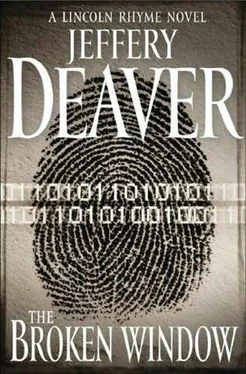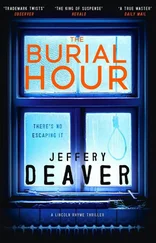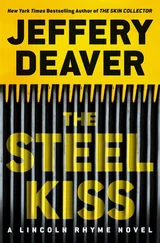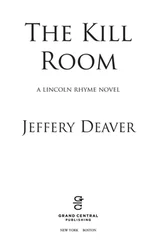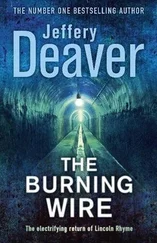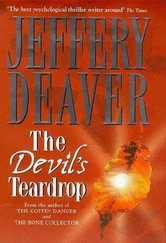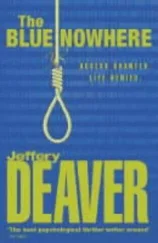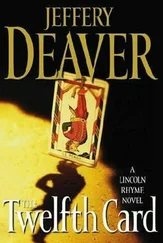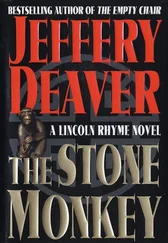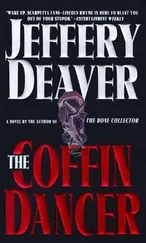Sterling printed out a pass for her, signed it and handed it to the guard, who led her out into the halls.
Sachs was pleased that Sterling hadn’t resisted her request. She had an ulterior motive for seeing the pens for herself. Not only could she make yet more people aware of the investigation-in the hope they’d go for the bait-but she could question the guard about the security measures, to verify what O’Day, Sterling and Whitcomb had told her.
But the man remained virtually silent, like a child told by his parents not to speak to strangers.
Through doorways, up corridors, down a staircase, up another one. She was soon completely disoriented. Her muscles shivered. The spaces were increasingly confined, narrow and dim. Her claustrophobia began to kick in; while the windows were small throughout the Gray Rock, here-approaching the data pens-they were nonexistent. She took a deep breath. It didn’t help.
She glanced at his name badge. “Say, John?”
“Yes, ma’am?”
“What’s the story with the windows? They’re either small-or there aren’t any.”
“Andrew’s concerned that people might try to photograph information from outside, like passcodes. Or business plans.”
“Really? Could somebody do that?”
“I don’t know. We’re told to check sometimes-scan nearby observation decks, windows of buildings facing the company. Nobody’s ever seen something suspicious. But Andrew wants us to keep doing it.”
The data pens were eerie places, all color-coded. Personal lifestyle was blue, financial red, governmental green. They were huge spaces but that did nothing to allay her claustrophobia. The ceilings were very low, the rooms dim and aisles narrow between the rows of computers. A constant churning filled the air, a low tone like a growl. The air-conditioning was working like mad, given the number of computers and the electricity they’d require, but the atmosphere was close and stifling.
As for the computers, she’d never seen so many in her life. They were massive white boxes and were identified, curiously, not by numbers or letters but by decals depicting cartoon characters like Spider-Man, Batman, Barney, the Road Runner and Mickey Mouse.
“SpongeBob?” she asked, nodding at one.
John offered his first smile. “It’s another layer of security Andrew thought of. We have people looking online for anybody talking about SSD and innerCircle. If there’s a reference to the company and a cartoon name, like Wile E. Coyote or Superman, it might mean somebody’s a little too interested in the computers themselves. The names jump out more than if we just numbered the computers.”
“Smart,” she said, reflecting on the irony that Sterling preferred people to be numbered and his computers named.
They entered the Intake Center, painted a grim gray. It was smaller than the data pens and boosted her claustrophobia even further. As in the pens, the only decorations here were the logo of the watchtower and illuminated window, and a large picture of Andrew Sterling, a posed smile on his face. Below it was the caption “You’re Number One!”
Maybe it referred to market share or to an award the company had won. Or maybe it was a slogan about the importance of employees. Still, to Sachs it seemed ominous, as if you were at the top of a list you didn’t want to be on.
Her breathing was coming quickly as the sense of confinement grew.
“Gets to you, doesn’t it?” the guard asked.
She gave a smile. “A little.”
“We make our rounds but nobody spends more time in the pens than we have to.”
Now that she’d broken the ice and gotten John to answer in more than monosyllables, she asked him about the security, to verify if Sterling and the others were being straight.
They were, it seemed. John reiterated what the CEO had said: None of the computers or workstations in the rooms had a slot or port to download data, merely keyboards and monitors. And the rooms were shielded, the guard said; no wireless signals could get out. And he explained too what Sterling and Whitcomb had told her earlier about data from each pen being useless without the data from the others and from Intake. There wasn’t much security on the computer monitors but to get into the pens you needed your ID card, a passcode and a biometric scan-or, apparently, a big security guard watching your every move (which was just what John had been doing, and not so subtly).
The security outside the pens was tight too, as the executives had told her. Both she and the guard were searched carefully when they left each one and had to walk through both a metal detector and a thick frame called a Data-Clear unit. The machine warned, “Passing through this system permanently erases all digital data on computers, drives, cell phones and other devices.”
As they returned to Sterling’s office John told her that to his knowledge nobody had ever broken into SSD. Still, O’Day regularly had them run drills to prevent security intrusions. Like most of the guards, John didn’t carry a gun but Sterling had a policy that at least two armed guards be present twenty-four hours a day.
Back in the CEO’s office, she found Pulaski sitting on a huge leather sofa near Martin’s desk. Though not a small man, he seemed dwarfed, a student who’d been sent to the principal’s office. In her absence, the young officer had taken the initiative to check on the Compliance Department head, Samuel Brockton-Whitcomb’s boss, who had all-access rights. He was staying in Washington, D.C.; hotel records showed he’d been at brunch in the dining room at the time of the killing yesterday. She noted this, then glanced over the all-access permission list.
Andrew Sterling, President, Chief Executive Officer
Sean Cassel, Director of Sales and Marketing
Wayne Gillespie, Director of Technical Operations
Samuel Brockton, Director, Compliance Department
Alibi-hotel records confirm presence in Washington
Peter Arlonzo-Kemper, Director of Human Resources
Steven Shraeder, Technical Service and Support Manager, day shift
Faruk Mameda, Technical Service and Support Manager, night shift
She said to Sterling, “I’d like to interview them as soon as possible.”
The CEO called his assistant and learned that, other than Brockton, everyone was in town, though Shraeder was handling a hardware crisis in the Intake Center and Mameda would not be coming in until three that afternoon. He instructed Martin to have them come upstairs for interviews. He’d find a vacant conference room.
Sterling told the intercom to disconnect and said, “All right, Detective. It’s up to you now. Go clear our name…or find your killer.”
Rodney Szarnek had their mousetrap in place and the young shaggy-haired officer was happily trying to hack into SSD’s main servers. His knee bobbed and he whistled from time to time, which irritated Rhyme, but he let the kid alone. The criminalist had been known to talk to himself when searching crime scenes and considering possible approaches to a case.
Takes all kinds…
The doorbell rang; it was an officer from the CS lab in Queens with a present, some evidence from one of the earlier crimes: the murder weapon, a knife, used in the coin theft and killing. The rest of the physical evidence was “in storage somewhere.” A request had been made but no one could say when, or if, it could be located.
Rhyme had Cooper sign the chain-of-custody form-even after trial, protocols must be followed.
“That’s strange: Most of the other evidence is missing,” Rhyme remarked though he realized that, being a weapon, the knife would have been retained in a locked facility in the lab’s inventory, rather than archived with nonlethal evidence.
Читать дальше
